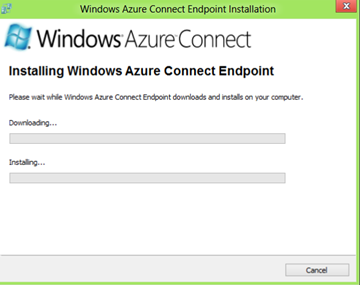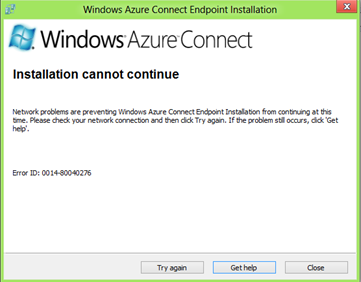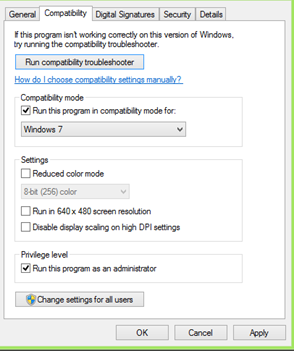We recently had the need to connect local endpoint to an Azure instance as part of a scalable load testing rig. To do this remote Visual Studio load test Agents are installed in a Web Role and connect back to a local Controller located somewhere closer to Visual Studio so we can generate *lots* of traffic close to the target application but get results back in Visual Studio.
Running Visual Studio 12 and Windows 8 Release Preview sometimes adds to the complexity.

In Windows Azure clicking on “Install Local Endpoint” gives you a link to download the agent and token onto the local computer. Simply running that downloaded file on Windows 8 fails on the “Downloading…” step.

With an error message:
Installation cannot continue
Network problems are preventing Windows Azure Connect Endpoint Installation from continuing at this time. Please check your network connection and then click Try again. If the problem still occurs, click ‘Get help’.
Error ID: 0014-80040276

Digging a little deeper shows the error is actually logged in the install folder
C:\Program Files (x86)\Windows Azure Connect\Endpoint\Logs\Logs.log and looks to be attempting to access a folder called:
C:\Program Files (x86)\Windows Azure Connect\Endpoint\\Databases\
C:\Program Files (x86)\Windows Azure Connect\Endpoint\\ClientSD\
Which do not exist. To resolve the problem, “Save” the file instead of Running it as the documentation suggests

Right Click on the downloaded file, choose Properties and “Unblock” it under the General tab

Switch to the Compatibility tab and choose Windows 7 and Run as Administrator.

Now go back into the Azure Portal and copy the “Activation Token” by clicking this button.
Then run the installation (replacing the token with your token copied from the portal)
wacendpointpackage.exe /token aa684278-ff75-4c85-bbd3-aa9b337cd9af
Alternatively install normally using wacendpointpackage.exe
then:
1) Add the registry key HKEY_LOCAL_MACHINE\Software\Microsoft\Windows Azure Connect\Endpoint\
ClientActivationToken REG_SZ aa684278-ff75-4c85-bbd3-aa9b337cd9af
2) net stop wace
3) net start wace
Now after the install, the offending directories are correctly located
C:\Program Files\Windows Azure Connect\Endpoint\Databases\
C:\Program Files\Windows Azure Connect\Endpoint\ClientSD\
along with the rest of the installed files.
Now your computer will appear in the Azure Portal under Activated Endpoints.
Then its the normal process of creating a Group and putting your Computer and an Activated WebRole into the same group.
—


Hi Peter, Nice blog, very useful!
After installing Windows Azure Connect endpoint on Windows 2012 this way, you need to do the followings to activate the endpoint:
In regedit, add registry value for client activation token:
1) HKEY_LOCAL_MACHINE\Software\Microsoft\Windows Azure Connect\Endpoint
ClientActivationToken REG_SZ
2) net stop wace
3) net start wace
what registry value do I use?? I don’t understand this comment.
Thanks for the post, but after I installed it on my win2012, the endpoint machine would not show up in the portal. The problem still existed after I checked the network connectivity and firewall rules. Then I checked the running log, and found nothing interesting. Do you have such problems?
Did you use this method?
wacendpointpackage.exe /token aa684278-ff75-4c85-bbd3-aa9b337cd9af
I’ve uninstalled and deleted all endpoints started from fresh and can confirm it is working for me.